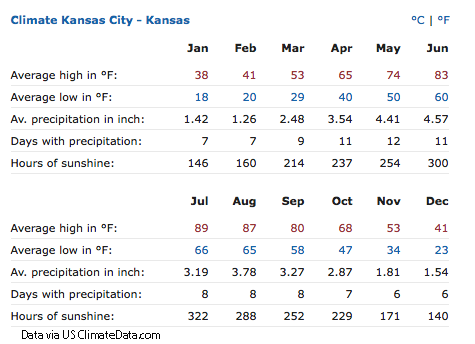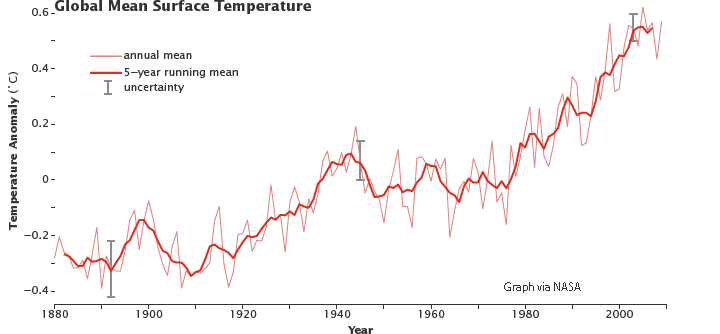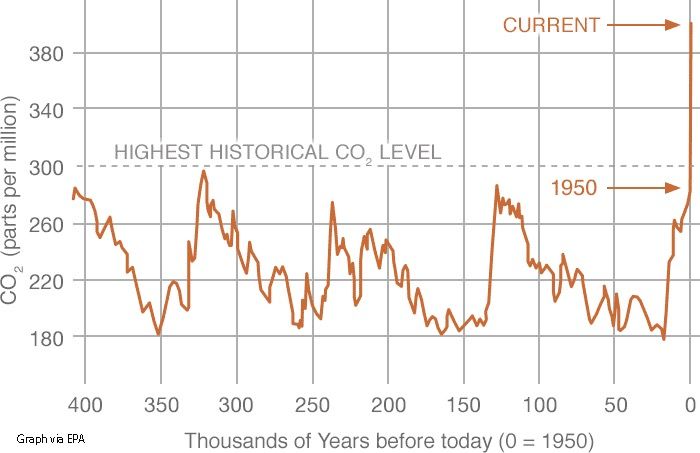TRACKING THE EFFECTS OF A CHANGING CLIMATE
From the mountains of Bolivia to the concrete jungle of Tokyo, climate change could make consequential changes to our way of life.
We often connect climate change to weather events, such as when someone jokes that we need more global warming after a snowstorm, but it is important to remember that weather changes daily and even hourly. Climate, however, is a pattern of weather established over an extended period in a certain area. If recent weather events indicate a fundamental change in our climate, we should all be concerned.
Over 97% of actively publishing scientists agree that the climate is changing and that rising temperatures indicate human activities are the cause. Specifically, the burning of fossil fuels used in energy creation leads to the release of carbon, which increases the amount of heat trapped in the atmosphere through a process commonly known as the greenhouse effect. The subsequent temperature increase, according to many scientists, does not lead to a universally warmer climate, rather it creates oscillations or new variations. When looking at recent events, such as an Antarctic glacier the size of Delaware plummeting into the ocean, or summer temperatures in the 100s in the American Pacific Northwest, an area that does not even use air conditioning, it would seem imperceptive to not consider that our climate is changing.
Kansas City natives probably noticed that our summer temperatures were abnormally cool this year - not that anyone complained. In 2010, the summer average (May-August) temperature was 79.9 degrees. Through August of 2017, the average KC temperature was 65.4 degrees. Kansas City did not have a single day this year in the 100s, where that figure is typically in the teens.

While Kansas City’s summer was unusually cool, elsewhere temperatures were uncommonly hot. The United States’ Pacific Northwest typically has summer temperatures with highs in the 80’s. In the summer of 2017, the areas around Seattle and Portland experienced record highs with temperatures rocketing into the 100’s. For reference, many buildings in these areas do not use central air conditioning because their temperatures never require it. Areas in Spain also experienced record highs with temperatures in the 100’s. Since cities like Barcelona and Madrid do not use air conditioning, these temperatures have been troublesome for residents and tourists. If these weather patterns become a permanent change in climate, people from Barcelona to Portland may need to consider investing in home cooling units.

So, is something else adding to these weird weather patterns? One fact that helps explain these unusual temperatures is the El Niño Southern Oscillation. This phenomenon refers to the active cycle of warm and cold temperatures according to sea surface temperature in the central and eastern Pacific Ocean. El Niño refers to warm temperatures and La Niña to cold temperatures, and the whole system causes global changes in temperature and rainfall. The cycle itself has gradually shifted over the last 20 years. High-pressure systems have forced warmer air into the areas around Antarctica, causing ice to melt. Over the North American summer, the cycle shifts warm air typically to the areas north of the equator, specifically Central America, Mexico, and the Southern United States. Summer for places north of the equator is winter for those south of the equator, hence why Christmas is warm in South America. As the cycle moves in varying patterns, the high-pressure systems carrying warmer air are moved to different areas, like the American Pacific Northwest, cycled further south to Antarctica, and then by using Atlantic currents, moved back north into Europe to affect temperatures in Europe.
Though an El Niño is a common weather event, a study published in this January's Nature Geoscience examined 23 years of satellite data and found that human-induced climate change increases their frequency. Ocean temperature changes do not entirely explain why Kansas City had such a cool summer, but they could be part of a more significant alteration to our global climate.

Scientific agreement on climate change being caused by human pollution is nearly unanimous. However, political controversy continues to surround the issue, particularly with solutions that require changes to energy use. Regardless of differing political opinions, as long as extreme weather events continue and global temperatures rise, climate change will be a concern that forces conversations about lifestyle choices across the globe.








